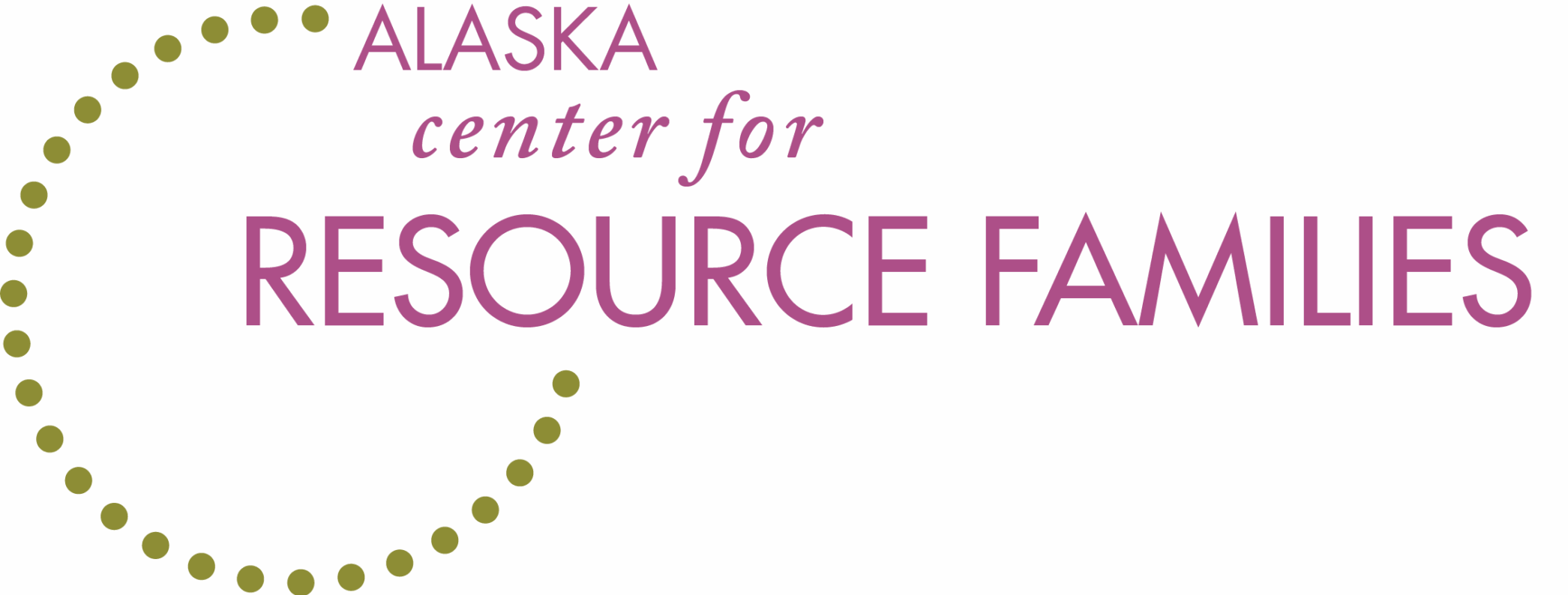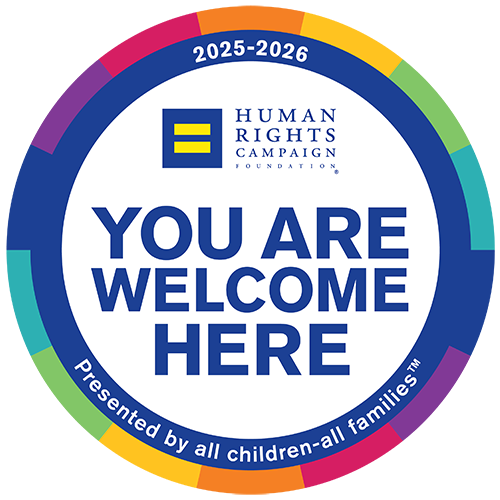Mental health support guide for parents and caregivers
Mental health is not just about caring for mental health conditions — it is also about promoting a child’s wellbeing and ability to thrive.
For children and youth who have experienced trauma, pain is often communicated through their behaviors or emotions. Safe, stable, and nurturing relationships along with effective treatment can help make a big difference.
Jump to: When to seek support | Care levels and provider roles | Preparing for treatment | Mental health assessment | Paying for treatment | Crisis and safety plans | Self-care
Moment of reflection
As you begin, take a moment to reflect on the behaviors and emotions that led you here. Parenting children with a history of trauma, loss, or instability often comes with unique challenges.
As a parent or caregiver, it is normal to feel uncertain or overwhelmed about when to seek professional support. This is the first step towards healing for your child.
In our most challenging moments, there is strength to be found in asking “where do I begin?”
We have created this resource to help build your knowledge through clear information, practical tools, and support for when the needs of your child extend beyond your home.
Alaska Center for Resource Families (ACRF) is committed to being a steady, trusted support for all Alaska families. We are honored to walk this journey alongside you and are here to provide any additional information your family may need.
Signs that support may be needed
You may want to seek professional support if your child is exhibiting the following behaviors and struggling beyond what can be managed at home.
Is your child or youth:
- Coping with or exploring alcohol or substance use
- Displaying new or extreme attention seeking behavior
- Exhibiting aggression, sexual behaviors, or self-harm (cutting, hair pulling, disordered eating, etc.)
- Sudden shifts in sleep patterns, hygiene, or appetite
- Making distressing comments or withdrawing from others
- Worrying excessively, seeming constantly anxious or on edge
- Repeating harmful behaviors (skin picking, fire starting)
- National Child Traumatic Stress Network: Help Kids Cope
- National Child Traumatic Stress Network: Recognizing drug use in adolescents (PDF)
- ACRF: ADVOCATE as a caregiver (PDF)

Tip: Don’t wait for a crisis
Often, these behaviors stem from trauma, attachment disruptions, or developmental challenges. Early intervention leads to better outcomes.
Understanding levels of care and the roles of providers
Mental health services are not one-size-fits all.
Different youth need varying levels of support and care depending on their history, current challenges, and safety needs. This section outlines common types of treatment and mental health professionals that may have a role in your child’s treatment team. While providers typically recommend level of care, understanding the different types of treatment helps you advocate for your child.
Types of mental health professionals
- Case manager: Helps coordinate services and supports
- Therapist and counselor: Offer therapy (talk therapy, play therapy, etc.) for individuals, families, or group sessions.
- Psychologist: Provides assessments and therapy
- Psychiatrist: Medical doctor who can prescribe medication
Levels of care
Treatment: Outpatient therapy
- What to expect: Individual, family, or group therapy sessions. May include skill-building or trauma informed work. Typically, 1 hour weekly sessions.
- Recommended for: Youth who are coping at home and school but need support managing emotions or behaviors.
Treatment: Day treatment or partial hospitalization (PHP)
- What to expect: Structured program, usually five (5) days a week from 6-8 hours per day. Includes group therapy, individual therapy, family sessions, psychiatric services, and medication management. Academic support is often integrated.
- Recommended for: Youth with moderate to severe mental health needs who are stable enough to live at home.
Treatment: Therapeutic treatment homes (TTH)
- What to expect: A specialized foster home with trauma-trained parents and a multidisciplinary team. Includes intensive individual therapy, family therapy, behavioral skill building, and safety planning.
- Recommended for: Youth with serious emotional or behavioral challenges needing intensive daily support in a home setting.
Treatment: Residential treatment
- What to expect: Continuous care (24/7) in a staffed facility. Daily structured activities include individual and group therapy, education, medication support, and recreation. Focuses on safety, healing, and life skills.
- Recommended for: Youth with high safety risks, complex trauma, or who have not responded to lower levels of care.
Treatment: Out-of-state residential treatment
Recommended for: Youth with high-acuity needs when no suitable in-state option is available.
What to expect: Similar to in-state residential but provided in another state due to capacity or specialized treatment needs.
- All Alaska Pediatric Partnership: Help Me Grow Alaska
- U.S. Dept. of Health and Human Services: FindTreatment.gov
- Psychology Today: Find Medicaid Treatment Programs, Medicaid Treatment Centers, Medicaid Rehab
- ACRF: Defining the Challenge (PDF)
Choosing the best care together
Your child’s provider will help determine the most appropriate level of care based on the needs of the youth. Caseworkers, family input, and youth voice are vital parts of the decision-making process.
Preparing for treatment
Once you have identified a need, the next step is gathering everything you need and creating a clear and manageable plan.
This section guides you through scheduling your first appointment, preparing your child, and gathering key documents. Your support is essential to help your child feel safe and supported.

A positive start for care
The first appointment will set the tone for your child’s experience with mental health care. Preparing your child for what to expect can help reduce stress or anxiety throughout their treatment journey.
Scheduling an appointment
The first appointment is typically an in-depth mental health assessment.
Tips for scheduling:
- Try to schedule recurring sessions at consistent times (i.e. same day and time)
- Be mindful of school hours, fatigue, and your child’s energy levels when preparing for sessions
- For more intensive or emotional appointments, consider the times of day when focus and regulation comes more naturally to your child
- If your child is in foster care, get the Office of Children Services (OCS) involved early and often. Your OCS caseworker must approve and sign a release of information (ROI) form so that you can stay involved in your child’s treatment
- Reach out to OCS medical mental health unit for provider recommendations
Questions to ask agency staff
Contacting the provider’s office for the first time can be a daunting task.
When you contact the provider’s office for scheduling, you may not speak to the provider directly. This is a good time to ask logistical questions to ensure that your child can receive treatment with that provider.
The following are suggested questions to help you choose the right provider.
- Is a referral required to receive treatment services?
- What insurances are in-network with this agency?
- Do you accept Medicaid/Denali KidCare?
- Do you offer in-person, telehealth, or hybrid appointments?
- If my insurance is out of network, what are my options?
- Should I prepare any documentation prior to the first visit? If so, what?
Get organized
Having clear and organized records helps you advocate for your child, ensures all parties are aligned, reduces the possibility of confusion, and ensures accurate information is being provided. This helps your child receive the best care possible.
Gather documentation
While as foster and adoptive parents, you may not have all documentation and information about your child, it is important to gather as much as you can. Start creating a care binder with any and all information you have for each child. Consider what you refer to the most when advocating for your child.
Suggestions include:
- Court orders and/or placement documentation, power of attorney, etc.
- Emergency contacts and care team details
- IEPs or 504 plans
- Medical records including medication lists and allergy records
- Previous therapy and medical assessments including diagnosis reports
- Signed release of information (ROI)
ACRF: Medical paperwork checklist (PDF)
Finding the right fit
Choosing a provider that works well with your child and understands their unique needs is a critical step in treatment. The right fit provides emotional safety, builds trust, and creates a connection with your child.
Choosing a provider
Children in foster care or adoptive placements may need additional support or specialized treatment to learn the skills to support their trauma, disrupted attachment, or identity concerns.
Provider qualifications
Mental health providers, much like medical providers, can earn numerous qualifications.
When searching for a provider, it is good to understand what qualifications, training, and credentials the provider may have. Below is a list of common licenses, specializations, and credentials a provider may hold.
Common licenses:
- LPC: Licensed professional counselor
- LCSW: Licensed clinical social worker
- LMSW: Licensed medical social worker
- LMFT: Licensed marriage and family therapist
- Pre-licensed is a provider who has completed educational requirements and is receiving clinical supervision from a licensed provider.
Credentials:
- CBT: Cognitive Behavioral Therapy (commonly known as talk therapy)
- DBT: Dialectical Behavior Therapy
- EMDR: Eye Movement Desensitization and Reprocessing
- Family systems therapy
- Play therapy
- TBRI: Trust Based Relational Intervention
Specializations:
- Adoption competent
- Attachment focused
- Child/adolescent mental health
- Identity and cultural focused
- Trauma-informed care
Provider questionnaire
When navigating mental health services, asking the right questions early on can help you understand what to expect and how to best support your child.
The following are suggested questions to ask the provider to help begin choosing a good fit.
- What crisis support does your agency offer? What support do parents/caregivers receive?
- What does your agency need from me? How can I make this process run more smoothly?
- Do you have experience working with youth in foster care or adopted from foster care?
- Do you offer family therapy and/or sessions to discuss parenting strategies to implement at home?
- How do you advocate for youth who have experienced childhood trauma?
- Are you willing to collaborate with caseworkers, GALs, and other service providers who are on my child’s team?
- How do you support children who have questions about their identity or their birth family?
- How do you keep parents/caregivers informed without breaking the child’s privacy? What kind of information do you disclose to the parent/caregiver?
Mental health assessment
Mental health assessments are the most crucial step in receiving mental health treatment. It allows the provider to understand your child’s emotional and behavioral needs.
Understanding a mental health assessment
- A mental health assessment is a valuable tool used by providers to better understand your child’s emotional, behavioral, and developmental strengths and challenges.
- It typically involves both you and your child, offering insight on behaviors and needs. These assessments also help the provider understand your child’s trauma history and how it may be impacting their current functioning.
- Based on the information gathered, the provider may offer a diagnosis and recommend therapeutic services, supports, or medication if appropriate. The goal of the assessment is to explore tools for you and your child to begin healing.
What to expect during an assessment
- During the assessment, you and your child can expect an intake interview which is an in-depth conversation about your child’s history, family background, and current concerns.
- The intake provider may conduct separate interviews to get honest perspectives from both you and your child.
- During the assessment, the provider will observe behaviors and interactions with your child. They may provide additional evaluations in the form of questionnaires, tasks, play, art, etc. depending on your child’s age and development.
- The provider may speak with other service providers such as counselors, caseworkers, and teachers, to gather collateral information about your child’s behaviors and concerns.
What to expecting after an assessment
- After the assessment, it is important to meet with the provider to discuss the assessment results.
- The assessment should include your child’s strengths and support needs to include a diagnosis, support recommendations, and support services. After the assessment, it is critical that you meet with a provider to discuss your child’s treatment plan as a result of the assessment.
- The treatment plan will outline the frequency of treatment services, goals, and objectives. During the treatment planning, it is important that you and your child express your wants, needs, and feelings about the treatment recommendations.
Understanding a neuropsychological evaluation
- Your child’s mental health provider may refer your child for a neuropsychological evaluation, also known as a neuropsych.
- This type of assessment is conducted by a psychologist or psychiatrist, specifically trained in conducting neuropsychological evaluations.
- The evaluation can help understand how your child is functioning. It evaluates your child’s learning, memory, attention, behavior, and emotions via testing, interviews, and questionnaires. Neuropsych evaluations provide a personalized recommendation for assisting your child in their development.
Documenting your child’s journey
Parents and caregivers play a large role in mental health assessments. Before the assessment, reflect on your child’s journey. The assessment is your opportunity to discuss behaviors, challenges, and strengths that you have noticed, along with any concerning changes.
This list can serve as a guide for your reflections:
- Are you and/or your child interested in medication being included in their treatment?
- Are you and/or your child interested in medication being included in their treatment?
- What behaviors or concerns made you seek professional help?
- When did you notice the concerns start or become worse?
- Is there anything that makes the behaviors better or worse?
- Does your child present differently in different settings?
- Does your child have any trauma, or have they experienced major life events?
- Is there any pattern to their behaviors?
- What are your goals for treatment?
Paying for treatment
Navigating the costs associated with mental health treatment can be stressful and confusing.
While most children in foster care in Alaska have access to medical care, it can still be tricky working with systems like Medicaid, Denali KidCare, or private insurance as coverage can vary.
Medicaid and Denali KidCare
Most youth in foster care automatically qualify for Medicaid/Denali KidCare. Adopted children may qualify depending on family income and adoption subsidy agreement. This is an incredible resource when accessing mental health services for youth.
Qualifications and eligibility
Eligibility for Medicaid/Denali KidCare is based on household size and monthly gross income. Standards may change, view the most current guidelines at Medicaid Income Eligibility Standards
How to apply
There are numerous ways to apply for Medicaid/Denali KidCare:
- Apply online and check your status:
- Apply via phone: call the State of Alaska Division of Public Assistance at 1-888-318-8890.
When applying for Medicaid/Denali KidCare, be prepared to provide the child’s birth certificate or legal guardianship paperwork, adoption subsidy agreement (if applicable), and proof of income.
If your child is in foster care and they are not currently enrolled in Medicaid/Denali KidCare, contact your child’s OCS caseworker to help with this process.
Coverage after 30+ days in residential treatment
According to Alaska regulations (7 AAC 100.312), a child who has been in a residential medical or treatment facility for at least 30 consecutive days may be eligible for Denali KidCare even if they do not meet the standard income requirements.
This exception applies whether the facility is in-state or out-of-state (with prior authorization) and includes situations where a child is transferred between facilities without a break in care.
How to apply
- To apply for specialized coverage, contact the Division of Public Assistance at 1-888-318-8890.
- Contact the billing team of your provider for additional assistance.
When applying, be prepared to provide documentation of your child’s residential treatment stay, such as admission and discharge records, to support the 30-day requirement.
Private insurance
Private insurance can be an incredibly valuable tool in accessing treatment services. However, private insurance comes with complexities surrounding coverage rules and network limitations. Understanding how to access treatment utilizing your private insurance is important.
In network and out-of-network
Choosing an in-network provider can save you a lot of money. In-network providers have a contract with your insurance company, which means lower costs for you, like smaller copays and deductibles.
Out-of-network providers don’t have this agreement, meaning you will typically pay higher costs.
How to contact
The easiest way to contact your private insurance company is to call the customer service number on the back of your insurance card. This number connects you directly to someone who can answer questions about your coverage, help you find in-network providers, and explain your benefits.
Many insurance companies also have websites or apps where you can live chat, send secure messages, search for providers, and find answers without calling.
What to ask
When contacting your insurance company about accessing services for your child, it is important to gather information about coverage and referrals.
Below are questions to help start navigating your insurance.
- Are pre-authorizations required?
- What mental health services are covered under my plan? (psychotherapy, evaluations, medication, residential treatment, etc.)
- Is there a limit to the number of sessions per year?
- What providers are in-network for mental health treatment?
- What is my copay for mental health services? What costs are associated with receiving treatment services?
Paying for treatment not covered by insurance
If your child is not covered by insurance or if you utilize all sessions covered by insurance, there are still options available to assist with treatment costs.
Assistance options are typically determined by individual providers or agencies. It is recommended that you discuss coverage options with your provider if your child is not covered by insurance.
Payment plans
Some providers offer payment plans, allowing you to split the costs into smaller payments over time based on your financial situation.
Sliding scale fees
A sliding fee scale adjusts the cost of services based on a person’s income and financial situation, making it more affordable for those with lower incomes.
Other assistance or discounts
Some providers may offer additional financial aid or discounts based on specific circumstances such as military service or single-parent status.
Safety and crisis planning
Children with a history of trauma or behavioral health needs may experience big emotions and intense reactions, which can result in putting themselves or others in harm’s way. It is important to prepare for these situations by strengthening in the moment supports such as safety and crisis plans.
Safety plans are tools created and used to prevent a crisis from occurring. A crisis plan differs from a safety plan.
A crisis plan is a response tool that should be utilized when a crisis is occurring or when your child is in immediate distress or danger.
Safety planning
Safety plans help you and your child identify their triggers and coping skills. Safety plans are used before emotions and behaviors escalate to the point of a crisis, focusing on self-regulation and coping skills.
Safety plans should be used any time your child is experiencing emotional distress and needs help with self-regulation.
Creating a safety plan
When preparing a safety plan, it is best to know what triggers your child, what soothes them, and who to lean on during a time of need. A safety plan is a practical tool to use with your child. It is always best to create a safety plan with your child prior to a time of escalated behaviors.
- Understand how supports can help: Identify how you or your child’s support system can help during high-stress times.
- Understanding triggers: Identify experiences that upset your child or cause emotional distress.
- Identify warning signs: Know what behaviors your child exhibits before a crisis.
- Create a calming strategy: Identify coping strategies that help calm your child down.
- Create a calm space: Create a physical space where your child can go to regulate their emotions and feel safe.
- Identify support systems: Identify a few individuals (friends or reliable adults) who can provide support during high-stress times.
Crisis planning
Common crises amongst youth are suicidal thoughts, severe aggression, running away, and extreme emotional outbursts. A well-prepared crisis plan can help you and your child’s support system act effectively when there is a safety risk.
Creating a crisis plan
When preparing a crisis plan, it is best to understand and define what constitutes a crisis and create a safe environment.
- Define what a crisis looks like: Understand behaviors or signs that your child is in a crisis.
- Create a safe environment: Remove objects that your child can use to harm themselves or others.
- Create a contact list: Create a list of emergency contacts. These people should be available at any time of the day for assistance.
- Plan where to go if things escalate: Identify the nearest emergency room or facility that can provide care if your child needs additional support.
- Create a recovery strategy: Identify coping strategies that can be utilized after the crisis to help your child come back down to their baseline.
- Share the plan: Share the plan with other key members of your child’s team. This should be individuals who are around your child during times of escalation.
- SAMHSA: 988 Safety plan (PDF)
- ACRF: Stream Parenting 911 (audio recording)
- ACRF: My safety plan (PDF)
- ACRF: Family safety plan template (PDF)
Self-care for parents and caregivers
Parenting a child needing intensive mental health support can be a tough experience for everyone involved, including you. For foster and adoptive parents, there are often additional complexities making this journey even more exhausting.

Start by giving yourself grace
Remember, it is not a selfish act to care for oneself the way in which we extend care to others.
Identify your circle of support
Consider who is in your circle of support for your family and child. Identify 2-3 trusted people who you can lean on when times get tough.
This may include family members, close friends, supportive services, support groups, cultural connections, respite care, and self-care. Remember, you are not alone in this journey; resources and people are available to support you. Finding individuals in similar situations can be a safe place to learn from and talk through challenges.
Utilize respite care
If possible, find a respite provider. Consider utilizing respite services when available.
Respite care is intended to allow you time for yourself, to take a break from your child, while feeling confident that your child is well provided for. This is an emotionally and sometimes physically draining process, it is extremely important for you to take time to yourself to rest.
Find professional support
During this journey, you may find it helpful to receive professional support for yourself.
Finding a therapist for yourself or engaging in family sessions without your child present may help you process your emotions. Additionally, work closely with your child’s team. Your child’s case manager can help you navigate resources and services for your child, taking one thing off your plate.
Recognize burnout
Experiencing burnout or compassion fatigue is extremely common when raising a child with high needs. It is important that you understand the signs of burnout which may include constant fatigue, feeling unable to cope, disconnecting from your loved ones, neglecting your personal needs, and more.
If you start to feel like you may be becoming burnt out, that is the most critical time to tap into your circle of support, utilizing your respite care, and participating in self-care practices.
Self-care practices
Self-care should be implemented into your daily routine.
Self-care does not need to be big events, such as a day at the spa. It can be taking a quiet moment for something you enjoy. Self-care looks different for everyone, personalize your self-care to your needs and hobbies.
Some ideas for self-care include:
- Going on a walk
- Having a cup of coffee to yourself in the morning
- Meditation
- Physical exercise
- Therapy
- Connecting with other adults
- Getting adequate sleep
- Reading a book
ACRF: A circle of support (PDF)


